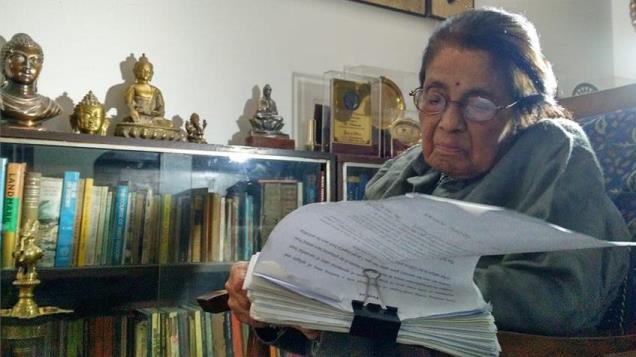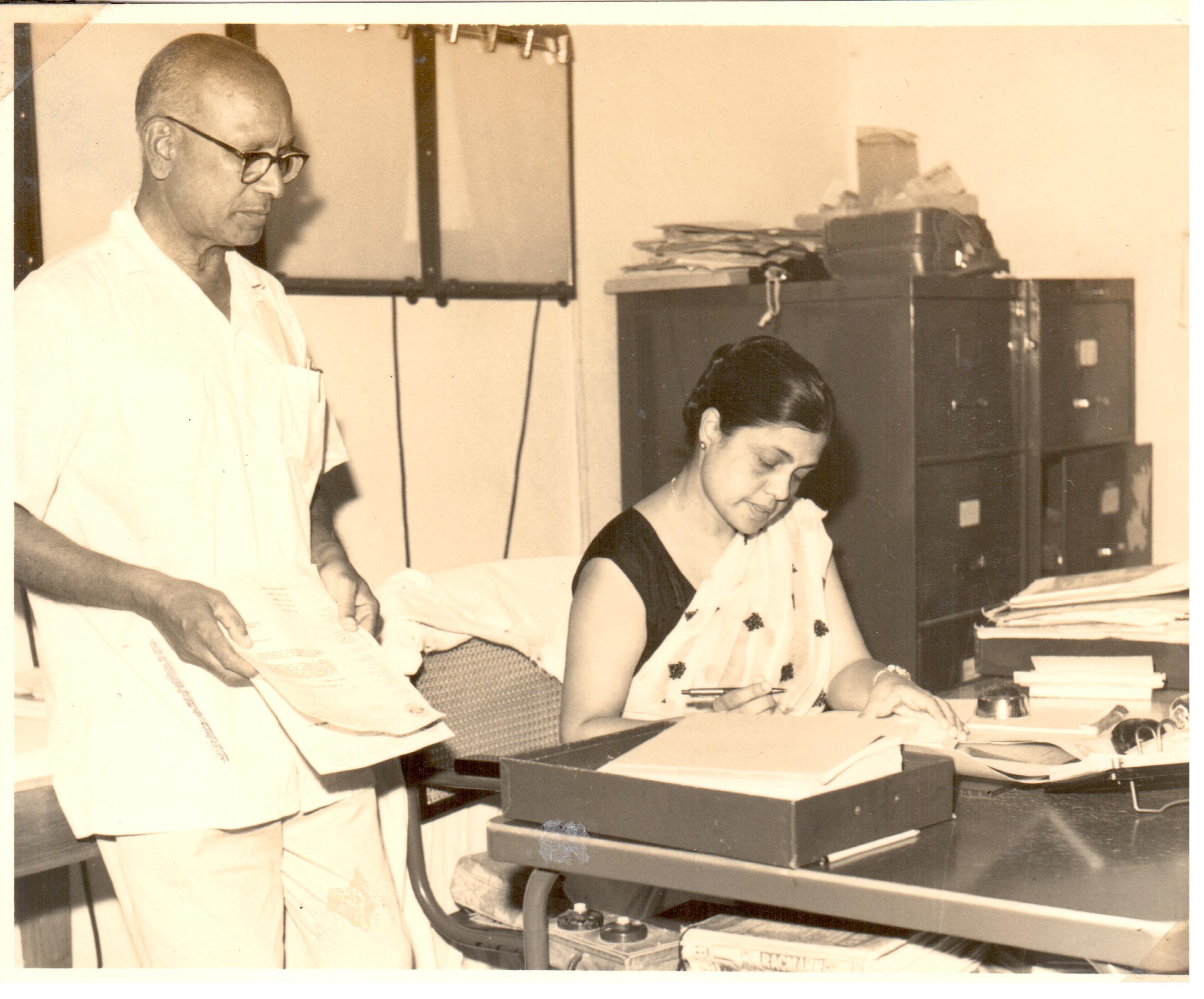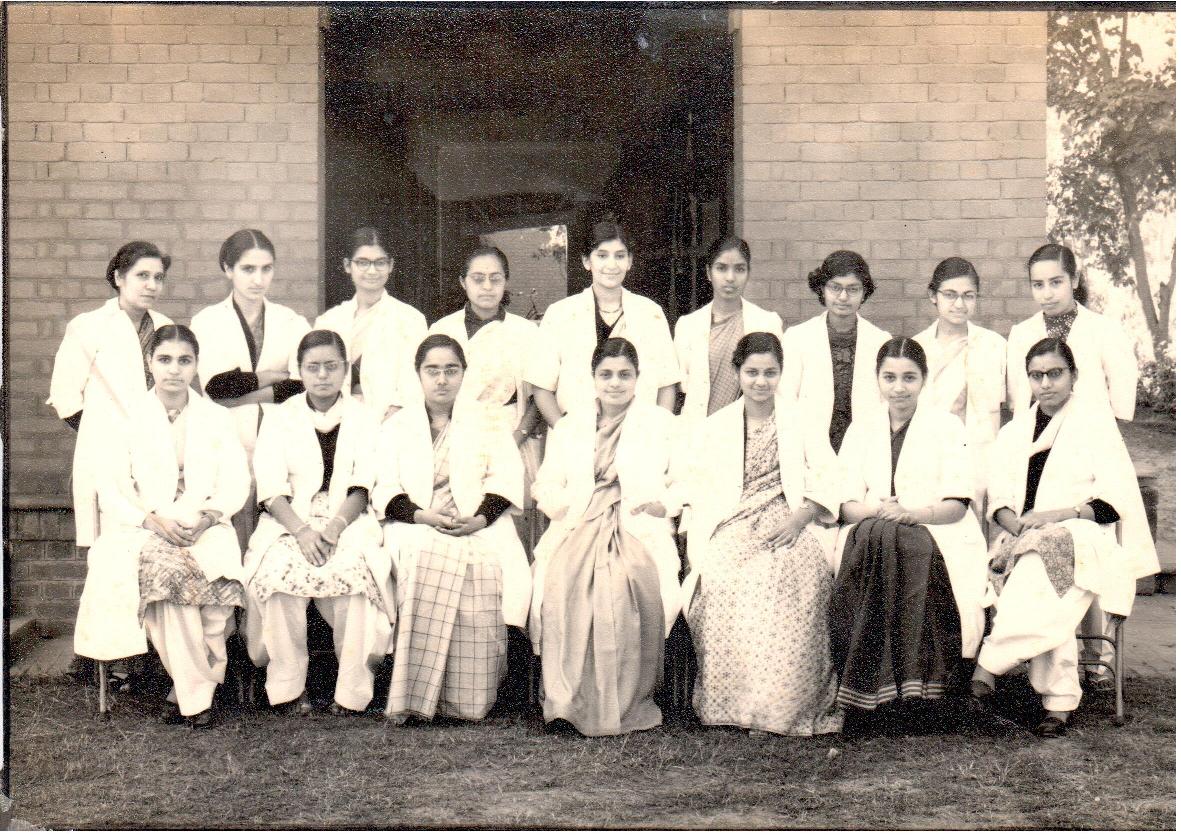
Dr S Padmavati at her office at residence. She is writing her autobiography
I was born in Burma, and completed my MBBS from Rangoon Medical College.
In 1949, I went to London and then to Edinburgh for post graduation. I was fortunate to get a fellowship to study paediatric cardiology at Johns Hopkins University under Dr Helen Brooke Taussig, the founder of paediatric cardiology. I studied adult cardiology at Harvard Medical School under Dr Paul White. I returned to Burma in 1952, but was told that that they didn't have a suitable post for me.
I had no choice but to leave Burma, and India was my first choice. One of my sisters was posted in Delhi, her husband was a foreign service officer. Without much difficulty, I got an interview with Rajkumari Amrit Kaur, the first health minister of India.
Rajkumari's offer, the post of lecturer in Medicine at Lady Hardinge Medical College in Delhi, then under the central government, was the only option. I took it up with some hesitation as I was used to co-educational institutes.
But I was happy that my tenure at Lady Hardinge gave me an opportunity to practice cardiology, which was at a nascent stage those days.
Lady Hardinge had been run as a hospital for women by women. Those days women patients did not like to consult a male doctor. The college did not have any male doctors in any department except physiology and pharmacology. The department of medicine, which also included paediatrics, was under my care.
I found the department orderly with well-kept records, and it was also equipped with an ECG machine. Those days, we used two buckets for the feet and right arm.
 Dr Padmavati at her office at Lady Hardinge Medical College in the early 1950s
Dr Padmavati at her office at Lady Hardinge Medical College in the early 1950s
I soon became a professor and head of the department (perhaps because there was nobody else). I saw many children, some as young as 3 years, with rheumatic heart disease in acute phase, with all the manifestation of arthritis, carditis, nodules, erythema marginatum. This started my interest in rheumatic heart disease which continues till day.
Fortunately, I got to work on several research projects relating to rheumatic heart disease from ICMR, USAID and other organisations that had never been heard of in Lady Hardinge Medical College before.
The Rockefeller Foundation helped us set up a cath lab, which gave a new fillip to cardiac care in the hospital. In the 1950s, rheumatic heart disease had dramatically declined in the US and other western countries due to more hygienic conditions and availability of antibiotics.
I also opened a cardiac clinic at Lady Hardinge, the first in Northern India , where a lot of men also used to come. This angered old timers who looked at Lady Hardinge as a women's bastion.
I also did other big cardiac projects in cor pulmonale, which was common among young women due to exposure to primitive fuel such as cow dung and husk. These projects were also supported by many research organisations such as USPHS, ICMR, and received worldwide acclaim.
I also opened a cardiac clinic at Lady Hardinge, the first in northern India , where a lot of man also used to come. This angered old timers who looked at Lady Hardinge as women's bastion.
 Dr Padmavati(front row center) with her students at Lady Hardinge Medical college in the 1950s
Dr Padmavati(front row center) with her students at Lady Hardinge Medical college in the 1950s
I had a team of 18 young girls, many of them, now in their eighties, are still in touch with me. We are very good friends and still celebrate Christmas together. Lady Hardinge was a very pleasant place those days, not overbuilt as it is today. There was a swimming pool and two tennis courts, where I used to enjoy the game with my students and staff. I had plenty of work and a comfortable house in the campus with all amenities.
In the mid-fifties, as cardiology became popular in India, many speciality hospitals such as GB Pant and AIIMS came up. In 1967, I got a promotion and took over as head of GB Pant hospital. I left Lady Hardinge with a heavy heart.
But the memories are very pleasant. I was invited as guest of honour on March 17, 2016 at the centenary celebration of Lady Hardinge in 2016.
--Dr Padmavati is India's oldest woman cardiologist.